Walking Around the Globe - a VR Picture Expedition
Watch our Video:
With our Hackathon prototype for a virtual 3D exhibition in VR we tackle several challenges.
• The challenge of exhibition space: many collections, especially small ones – like the Collection of Astronomical Instruments of ETH Zurich – have only a small or no physical space at all to exhibit their objects to the public
• The challenge of exhibiting light-sensitive artworks: some artworks – especially art on paper – are very sensitive to the light and are in danger of serious damaged when they are permanently exposed. That’s why the Graphische Sammlung ETH Zurich can’t present their treasures in a permanent exhibition to the public
• The challenge of involving the public: nowadays the visitors do not want to be reduced to be passive consumers, they want and appreciate active involvement
• The challenge of the scale: in usual 2D digital presentations the user does not get information about the real scale of the artworks and gets wrong ideas about the dimensions
• The challenge of showing 3D objects in the digital space: many museum databases show only one or two digital images of their 3D objects, so the user gets only a very limited impression
Our Hackathon prototype for a virtual 3D exhibition in VR
• offers unlimited exhibition space in the virtual reality
• makes it possible to exhibit light sensitive artworks permanently using their digital reproductions
• involves the public inviting them to slip into the role of the curator
• shows the artwork in the correct scale
• and gives the users the opportunity to walk around the 3D objects in the virtual space
A representative screenshot:
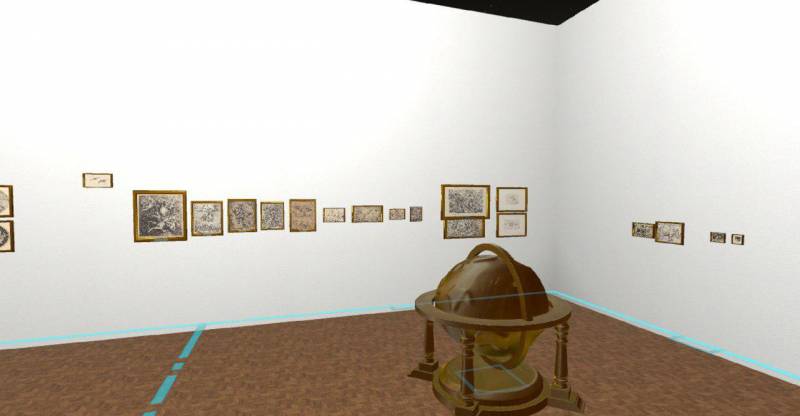
We unveil a window into a future where you can create, curate and experience virtual 3D expositions in VR. We showcase a first exposition with a 3D-Model of a globe like in the Collection of Astronomical Instruments of ETH Zurich as a centerpiece and works of art from the Graphische Sammlung ETH Zurich surrounding it. Users can experience our curated exposition using a state-of-the-Art VR headset, the HTC Vive.
Our vision has massive value for practitioners, educators and students and also opens up the experience of curation to a broader audience. It enables art to truly transcend borders, cultures and economic boundaries.
Project Presentation
You can download the presentation slides: 20181028_glamhack_presentation.pdf.
Project Impressions
On the very first day, we create our data model on paper by ensuring everybody got a chance to present their use cases, stories and needs. 
On Friday evening, we had a first prototype of our VR Environment: 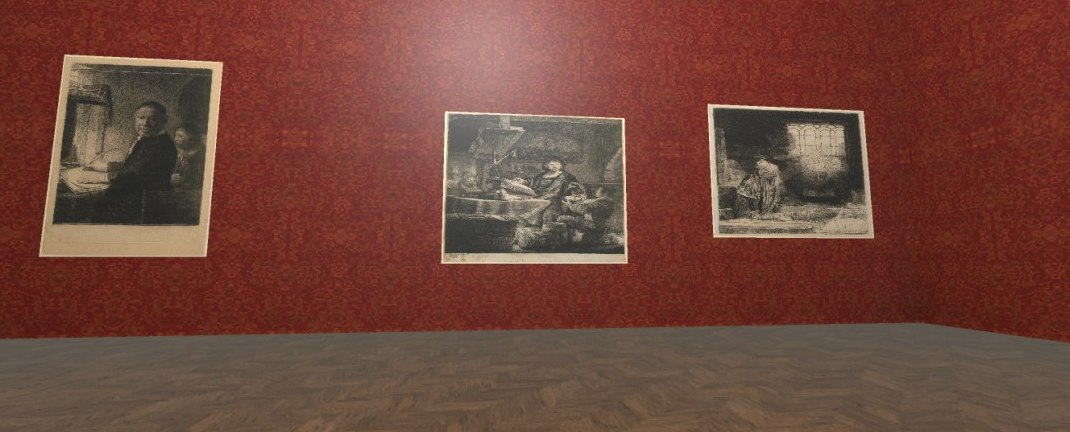
On Saturday, we created our interim presentation, improved our prototype, curated our exposition, and tried and ditched many ideas.
Saturday evening saw our prototype almost finished! Below a screenshot of two rooms, one curated by experts and the other one containing artificially generated art. 
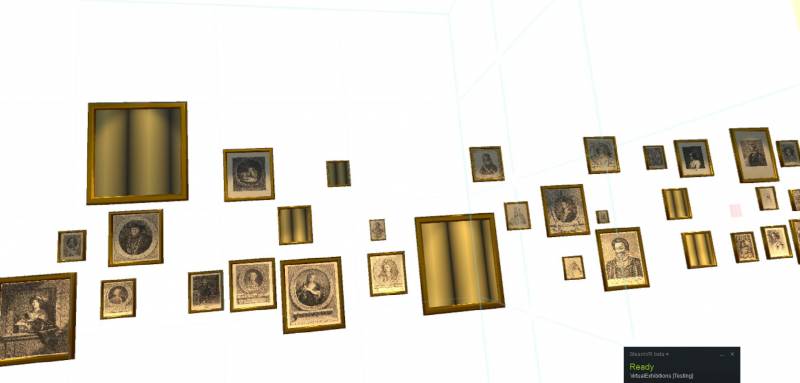
Our final project status involves a polished prototype with an example exhibition consisting of two rooms:
Walking Around The Globe: A room curated by art experts, exhibiting a selection of old masterpieces (15th century to today).

Style transfer: A room designed by laymen showing famous paintings & derivates generated by an artificial intelligence (AI) via a technique called style transfer.
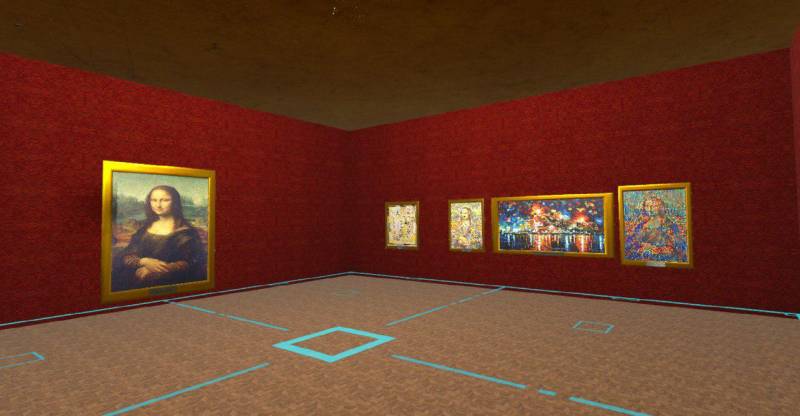
In the end we even created a mockup of the possible backend ui, the following images are some impressions for it:


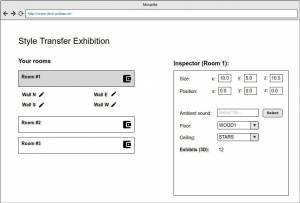
Technical Information
Our code is on Github, both the Frontend and the Backend.
We are using Unity with the SteamVR Plugin to deploy on the HTC Vive. This combination means we had to use combinations of C# Scripting (We recommend the excellent Rider Editor), design using the Unity Editor, custom modifications to the SteamVR plugin, do 3d model imports using FastObjImporter and other fun stuff.
Our backend is written in Java and uses MongoDB.
For the style transfer images, we used a open source python code which is available on Github.
Acknowledgments
The Databases and Information Systems Group at the University of Basel is the home of a majority of our project members. Our hardware was borrowed for the weekend from the Gravis Group from Prof. Vetter.
Data
- Dataset with digital images (jpg) and metadata (xml) from the Collection of Astronomical Instruments of ETH Zurich
- Graphische Sammlung ETH Zurich, Collection Online, four sample datasets with focus on bodies in the air, portraits, an artist (Rembrandt) and different techniques (printmaking and drawing)
Team
- Ivan Giangreco, Postdoc @ Databases and Information Systems Group
- Ralph Gasser, PhD Student @ Databases and Information Systems Group
- Mahnaz Amiri Parian, PhD Student @ Databases and Information Systems Group
- Silvan Heller, PhD Student @ Databases and Information Systems Group
- Loris Sauter, MsC Student @ Computer Science Uni Basel
- Ann-Kathrin Seyffer @ Graphische Sammlung ETH Zürich
- Susanne Pollack @ Graphische Sammlung ETH Zürich
- Agnese Quadri @ ETH Library
- Donatella Gavrilovich @ University of Rome "Tor Vergata"